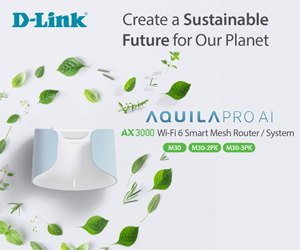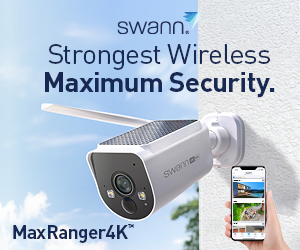The EcoFlow 400W portable solar panel is its largest four-panel portable, capable of outputting up to 48V/8.33A/400W.
Now, before you rush off and buy this, be aware of some compatibility design issues.
- Your portable power bank must support 40V, 400W charging via an XT60i 2-pin cable.
- Unfolded, it is approximately 106.8 (H) x 239.0 (L) x 19kg. When folded, it measures 106.8 x 600 x 2.4 cm. The case adds a few cm all around. You need transport space.
- It is IP68 weatherproof, but most portable power banks are IP20 and need a cover. The 3.5m cable can be extended a few metres.
You may be better looking at smaller panels (Prices are RRP exclusive of promotional discounts)
- 45W portable 4-panel $149
- 60W portable 4-panel $189
- 110W portable 4-panel $388
- 125W Bifacial modular $TBA
- 160W single facial 3-panel $499
- 160W Bifacial 3-panel $569
- 220W single facial 4-panel $629
- 220W bifacial 4-panel $699
- 400W single facial 4-panel $1229
Bifacial means it has solar collectors on both sides and can generate from about 7 to 25% more energy from reflected light, depending on the reflectivity factor (ranging from that of grass to a mirror).
These panels are brand agnostic, so you can use other portable power stations as long as they support 400W charging.
Australian Review: EcoFlow 400W portable solar panel
Note that prices are RRP as of 1/7/25
| Website | AU Home Page Product page Manual |
| Price | $1299 excludes any promotional or member discounts. |
| Warranty | 1-year ACL Warranty |
| From | The EcoFlow mantra is to create the world’s most innovative, eco-friendly power solutions, enabling you to live, dream, and explore without limits. In other words, it includes a range of solar generators and panels, portable power banks, portable air conditioners, and power kits. |
| Made in | China |
| Company | The EcoFlow mantra is to create the world’s most innovative, eco-friendly power solutions that enable you to live, dream, and explore without limits. In other words, it includes a range of solar generators and panels, portable power banks, portable air conditioners, and power kits. |
| More | CyberShack EcoFlow news and reviews CyberShack off-grid news and reviews |
Ratings
We use the following ratings for many of the items below. CyberShack regards 70/100 as a pass mark. You can click on most images to enlarge them.
- Fail (below expectations), and we will let you know if this affects its use.
- Pass(able) rating that is not as good as it should be.
- Pass (meets expectations).
- Pass ‘+’ rating to show it is good, but does not quite make it to Exceed
- Exceed (surpasses expectations or is the class leader).


First Impression – Pass+
It comes very well packaged and inside a hard-sided, padded carry case with an arm strap and carry handles. At 19 kg, it is not an easy lift.
It is precisely what I expected.


Setup
As we have learned from our Rooftop Solar series, the sun rises in the east and sets in the west. It has different rising angles from Summer to Winter and different intensities depending on the Perihelion (distance from the sun).
It also varies in output depending on the time of day and cloud cover.
Panels need to be pitched at a right angle to the sun, which coincidentally is your latitude. GPS Test is a great Android app that provides a compass and latitude functionality. I live at 33° latitude, so I made a cardboard wedge to use as a measuring tool.


It is very easy to set up, but I remind you that it is nearly 20kg.
- Unzip the case
- Lift out the folded panel
- Leave folded
- Use the 62cm case as a kickstand
- Lift the panels onto the kickstand (this is the most difficult part and likely a two-person operation)
- Plug in the XT60i cable to the positive and negative MC4 outputs.
The portable power bank and app should display the watts produced, and you may need to adjust the angle to achieve maximum output.
Contrary to popular belief, solar panels are least efficient when they are laid flat (except perhaps when the sun is directly overhead). EcoFlow recommends the panels be laid flat between 10 AM and 2 PM. We set them up at 33° for the test.
Tests: (EcoFlow DELTA 3 Plus 1800W/1024Wh portable power bank – perfect for cyclone season set to 8A solar charging and 10 to 100% charge/discharge)
| Time | Wattage output | Charged % | Time remaining hours |
| 9 AM | 100 | 10 start | 10 |
| 10 AM | 150 | 17 | 7.2 |
| 11 AM | 250 | 40 | 3 hours 20 minutes |
| Noon | 250 | 60 | 2 hours |
| 1 PM | 240 | 83 | 49 minutes |
| 2 PM | 225 | 100 | 0 |
Why not 400W all day?
There are potentially many reasons
- 400W is rated using lab tests
- Panel to DC efficiency is 23%
- Pitch is wrong
- Direction is wrong
- Shadow over a portion of the panel (see later)
- Portable power bank can’t handle 48V/8A
- Cloudy or overcast
The reality is that it charged a 1024Wh DELTA 3 Plus in 5 hours, with power ranging from 100W to 300W and an average of 220 W/h.
Shadow is deadly
It utilises four 12V/8A/100W Monocrystalline silicon panels in parallel to output 48V/8A/400W to any portable power station equipped with an MPPT (Maximum Power Point Tracking) solar charge controller.
For want of a better word, it is dumb and only outputs the lowest Wh of any panel. So, if you have three in bright sunlight and one with a shadow across part of it, then you get the lowest voltage/amperage/wattage. A shadow can be as small as that cast by your arm.
Build quality – Pass+
It is well-built, and the case features self-repairing zippers. Given reasonable care, it should last 10 years. Our tester, however, had it blown away by the wind, suffering minor scuffing damage.


In box
- 400W Solar Panel
- Kickstand Case
- 4 Snap hooks/Carabiners
- MP4 Solar to XT60 Charging Cable
- User Manual
Now, from a user’s perspective
Our friendly local tradie, Pete, uses a 2400W/2048Wh portable power bank to run his onsite welder and other equipment each day. He has been using the EcoFlow 400W portable solar panel on-site and for camping.
His comments are
- 400W portable panels take up a lot of room, so unless you have a spot for the 1 x .6 x .25cm panels in the truck, SUV, RV or car, consider smaller panels that you can fit.
- Love the attention to detail.
- IP68 means I can leave them set up.
- The panels are unwieldy and hard to manoeuvre when opened.
- The kickstand is pretty hit and miss. Sure, it holds the centre two panels, but the side panels will flap around.
- You need to adjust the angle at various times to get maximum wattage.
- Wind is deadly. Anything above a few kph, and this can take off. I am using tent pegs through the six eyelets on the bottom and rope ties at the top in case of wind.
My advice is to build a lightweight aluminium bracket (not built yet) and an aluminium kickstand to give it structural integrity. If you’re into DIY, Bunnings has 25mm Aluminium RHS and matching joiners that would make this project easy. I could mount it on my roof rack and still have room for ladders, conduit, and other equipment.

Alternatively, consider purchasing the EcoFlow 400W Rigid Solar Panel for a more permanent solution.

I find that it can charge 2000W in about 8 hours. What I really like is that I can leave it set up rain. I would not recommend permanent use. The GPS Test app makes it easy to achieve the proper orientation.
CyberShack’s view: EcoFlow 400W portable solar panel is perfect for power users (pun intended)
With two caveats, we recommend the EcoFlow 400W portable solar panel
- Understand that you won’t get 400W all day, every day
- Look at smaller panels for ease of handling.
EcoFlow 400W portable solar panel ratings
- Features: 80. Four panels, 3.5m MC4 charger cable and a case that doubles as a kickstand.
- Value: 75. At A$1299, it seems expensive. However, that panel is IP68-rated.
- Performance: 80. You can count on somewhere between 100-250W in ideal conditions.
- Ease of Use: 75. Not. It is big and heavy, the kickstand is difficult to use, and wind issues require extra care. You need to regularly check to see if you can get more power output.
- Design: 75. Needs a solid, adjustable leg system.
CyberShack Verdict
EcoFlow 400W portable solar panel
$1299










Comments